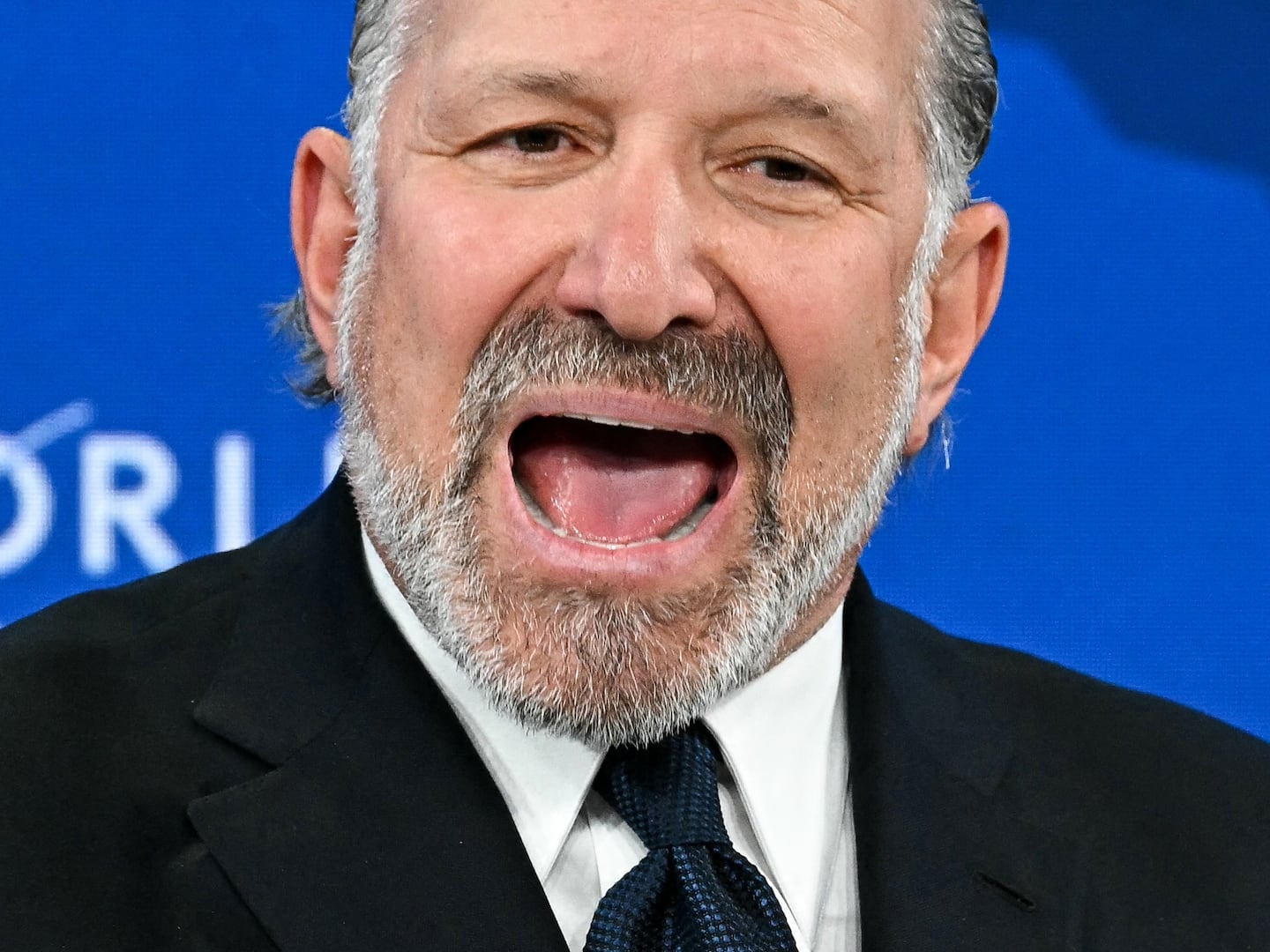It’s over. The cord is cut. Your cable box returned to a warehouse in New Jersey. You haven’t seen The Price is Right in so long you’ve forgotten how to even play the Showcase Showdown (sorry, Drew Carey).
With broadcast and cable television driving customers away with labyrinthine fee disputes that interrupt service, and video capabilities built or hacked into in a wide variety of media devices, business is booming for content streaming companies.
While Netflix, iTunes, and Amazon are primarily directing their efforts to archiving existing material, or expanding that archive with original content such as Orange is the New Black, sites like YouTube and Vimeo have had the infrastructure and user-generated content in place for years—and are positioning themselves as robust challengers to the old model.
It’s the age of the YouTube network.
Unique among them is My Damn Channel, a place for “original, native, digital content created by big name talent” says company founder Rob Barnett. “Our first thought was the Internet was a great place to build emerging talent, but in order to build a brand we were going to start by bringing the biggest names we could.” Started in 2007 with business partner Warren Chao, the company made instant waves, winning awards and attracting stars to a string of hit series like Wainy Days and Horrible People. Since last Spring, Barnett keeps asking, “If Internet video is a baseball game, what inning are we in?”
“When [Amazon, Hulu, and Netflix] started to come just in the last year with premium original digital series with top talent,” Barnett says, “it certainly entered into the second inning. The moves being made are placing those networks in competition with the HBOs, Showtimes, AMCs of the world.”
Six years after My Damn Channel launched Wainy Days, the YouTube show drew a total of 9 million viewers over the course of its five seasons, numbers that would make some network television shows jealous. (And that’s in an environment where a cable show like Breaking Bad, critical darling though it is, pulled only 10.2 million viewers for its finale.)
And while Netflix offers classics we’ve already seen, or things that were never meant to be seen (like the 1996 animated series Sky Dancers), small creative teams on the Internet provide niche content to interactive audiences. The most viewed videos on YouTube have been seen by billions. Even the Pope is getting in on the action.
***
While doing a series of web videos with her college roommate, Grace Helbig became the face of My Damn Channel as the host of DailyGrace. The show originated as a way to have a two way conversation with My Damn Channel’s audience. In 2010, DailyGrace started broadcasting on YouTube, posting tutorials, responding to fan comments, and introducing her friend Mamrie Hart, helping set up, You Deserve a Drink. While attending a convention, they met My Drunk Kitchen host Hannah Hart (no relation) and created an Internet legend.
Now known as YouTube Holy Trinity, the trio has enough archival material to fill several DVD box sets, or even a 24-hour television channel schedule—while continuing to produce content at an incredible pace. (The women did not disclose how much they make. Their performances are full-time gigs.)Together, Grace, Mamrie, and Hannah post a combined total video views (approximately 265 million) twice the number of people who voted in the 2012 presidential election.
With new videos appearing at least once a week, each of the series stars has appeared with other Internet personalities like Tyler Oakley, or featured guest appearances like IISuperwomanII on their own programs.
Mamrie Hart says her audience is “a generation of kids and teenagers who don’t know comedians on TV, but they know every YouTuber.” Grace says of her fans “it is strange, because I do consider myself just like them. I sit at home and watch YouTube videos.”
Perhaps most importantly, they appeal to and compete with an international audience in real time. Because traditional media is so entrenched in the United States, Hollywood is just as much a company town as Hershey, Pennsylvania. However, on a recent trip to London, Grace noted that she is recognized more often. "YouTube is already part of their mainstream culture, rather than being this second tier of media."
Hannah Hart recently finished a transcontinental tour that linked with other emerging web video artists. There is even a movie on the horizon. Camp Takota stars the Holy Trinity and is based on Mamrie’s magical experiences as a counselor at a women’s only summer camp in the mountains of North Carolina. “You’re 100% away from technology. There’s a whole, storybook, Norman Rockwell picturesque quality to it,” Mamrie says. Grace will play a character down on her luck who takes a job at a dysfunctional summer camp. But when asked to compare their film to other camp classics, both Grace and Mamrie envision something less like Meatballs and more like Bridesmaids. And to think, these YouTube stars met serendipitously by a pool at a convention.
***
Internet channels tend to leave behind many of old media’s trappings. A recent controversy over remarks made by Saturday Night Live cast member, Kenan Thompson, concerning the lack of female black comedians in the cast brought dozens of suggestions from all over the Internet.
Franchesca Ramsey is one of the names most commonly mentioned. Otherwise known as Chescaleigh, Franchesca is the Internet artist responsible for a broad spectrum of viral hits, including “Shit White Girls Say… to Black Girls” Pts 1 and 2, her Weird Al-esque song parodies, and insightful social commentary on Trayvon Martin and inappropriate Halloween costumes.
Ramsey is the first to acknowledge that hers is a difficult position. While diversity has long been a problem for SNL, directly challenging problematic institutions can alienate potential allies “but at the same time, the conversation [about diversifying the cast] is an important one. I’m flattered that people would even bring my name up” Franchesca says. “We want to see ourselves on TV.”
Despite generations of progress, all types of media businesses have been slow to address representational inequality and professional consideration.
“I’m interested in seeing what a television show would look like that used online content in creative ways,” Ramsey says. “It’s slowly starting to change.” She says Orange is the New Black is one of the best shows in a long time and a great chance for women of color. She sees merging the gap between educational and comedic content as a critical difference between standard entertainment and producing content for the Internet. “[It’s] such a big part of entertainment, they have to work together to be really successful. I don’t necessarily think I do any one thing. I consider myself an entertainer.”
She has over 20 million total views for her channel. Her most popular video, the aforementioned “Shit White Girls Say… to Black Girls,” was viewed 10.4 million times. She has a wide audience and voice for messages largely overlooked by mainstream television—including a ten part series on the social implications of the George Zimmerman trial or how-to guides for DIY dreadlock repair or owning up to a mistake.
Despite the success, Internet revenues only account for an approximate 75% of Franchesca Ramsey’s business. In fact, the viral success of her most popular video “Shit White Girls Say…” made it difficult to keep a regular office job, as promotional events would often interfere with a normal work day. And thoughts of mainstream success are never far from Ramsey’s mind. “My dream is to have my own television show.”
***
Big, entertainment-themed, channels aren’t the only ones that have staked out claims on the Internet. One YouTube videographer whose online presence feels like what Rob Barnett refers to as “a Wayne’s World version” of entertainment is technology super guru, and custom corset-ist, Fran Blanche.
Catering to a small audience of a little under 4,000, Fran’s channel mixes DIY engineering tutorials with handmade musical instruments and commercials for a high end online fashion boutique called Contour Corsets. The Internet was not a foregone conclusion for Fran, and despite the channel’s success is still only “a compliment to [her] business.” Because the corsetry has overshadowed other professional endeavors, Fran started a YouTube channel to do something other than selling, something “partly instructional, partly educational, and partly personal” that would be able to highlight “what I do, not necessarily what I’m known for.”
Fran’s first business was a custom guitar pedal company in mid-90s Brooklyn. And despite drawing attention from the late musical luminary Lou Reed, Fran has only ever advertised by word of mouth. “I don’t think advertising works. These days, unless you’ve got $20 million for an advertising budget, you won’t reach your audience. The only ad I ever ran for any business was back in 1995, I bought three ads in Guitar Player magazine.”
Both Fran Blanche and Rob Barnett talk about the amount of extra work these internet endeavors require. “When I’m in a really heavy, crunch project, I can almost work around the clock.” Fran says. Rob calls the My Damn Channel blog the Night Feed because during the company’s early days, he would feed his infant twins, one in each arm, while sitting at a computer in the middle of the night.
One thing these performers have in common are low production costs. Most of the videos are made in rooms or small studio spaces but technological advancements are allowing for authentically solo performances. Such is the case with German ex-patriot DJ Flula Borg whose linguistic exploration is interspersed with songs knit together from completely self-created looped vocal samples or special appearances from celebrity guests, like Sir Mix-A-Lot. “I also did love to create a Song from the Razor-Shaving-Sounds of my best American Friend, David Giuntoli (you may perhaps know him from the NBC Show Grimm),” Flula says, via email. "He is an Actor, but sometimes I do convince that he should make Techno with me. And he does do it, on the occasion. Right now I am making a Techno/Reggae song with Larry King; the song is about his nice Dog, Biscuit.”
And while the equipment powering DJ Flula’s music can be expensive, he cuts costs filming the videos everywhere: inside a car, in a public bathroom, even from bed. Flula says, “Where did Cave Men and Cave Ladies make Musik and Art? Well, obvious not in Abbey Road Studios—as Abbeys, Roads, and Studios were not existing 250.000.000 Years ago. So I say: ‘No Rules’ for What Is A Good Space for Recording. All Spaces may be good for Recording, as Each shall give to you A Feeling Unique.”
The technology isn’t perfect, nor are the companies implementing it. Sometimes, frustration bubbles over: As of last week Fran announced a departure from the YouTube channel as a result of changes to the commenting system.
***
Youtube users are not the only audience to take notice. My Drunk Kitchen has been covered by The Guardian, the Huffington Post, and Gawker. For an Internet audience already accustomed to getting their news from The Daily Show with Jon Stewart and The Colbert Report, Chescaleigh regularly provides a more nuanced understanding of current events than anything on “proper” television. And Rob Barnett is “building a new media company by stealing a few old-fashioned rules.”
There have even started to emerge critical darlings and breakout hits such as this summer’s Ask a Slave series by Jordan Black and Azie Mira Dungey, featuring Dungey as 18th Century historical re-enactor Lizzie Mae, responding to questions asked by real visitors to Mount Vernon during her time working there. Fans of the NBC show Community may recognize Jordan Black as Dean Spreck, the evil dean of City College. Ask a Slave has currently surpassed the fundraising goal for Season 2.
Another series earning well deserved accolades is The United Colors of Amani by Amani Starnes and Max Faugno. The series features an actress navigating the racially insensitive landscape of mainstream Hollywood. The United Colors of Amani also rounds out its team with an accomplished crew that has feet in both media worlds. The director, Max Faugno, has been featured as an actor in several old-media ventures, including guest spots on sitcoms like Malcolm in the Middle and The Royal Tenenbaums. The writing features the talents of the eponymous Amani and journalist Michael Agresta. With one episode left in their first season, and despite receiving glowing praise from media outlets such as Jezebel and Mediaite, Starnes and company are struggling to crowdfund their second season.
But the question remains about the next step for web content producers. Can YouTube branch out into longer form content? Two internet-only, full-length feature films suggest possible alternatives.
Girl Walks Into a Bar, a direct to YouTube film by Women in Trouble director Sebastián Gutiérrez drew major mainstream talent to its web-only cast, including acclaimed actors Carla Gugino and Emanuelle Chriquie from Entourage, and Star Trek’s Zachary Quinto.
The other, Girl Walk // All Day is devoid of big names, but with a 75-minute run time separated into 12 smaller parts, it tells an entirely silent, dance/acted story that captures iconic New York City landmarks in elaborate free form narrative ballet. In the film, a dancer finds herself locked in an epic battle of movement with two mysterious male figures encountered over the course of a single day.
Where Girl Walks Into a Bar is every bit a Hollywood film on the Internet, Girl Walk director Jacob Krupnick describes a guerilla approach to filmmaking. “The piano player in the opening scene was the only person who got paid ($60).” Everyone else donated time or money to the project which was crowdfunded exclusively on Kickstarter.
The one thing everyone seems to agree on is readiness of the Internet. Wherever these videos lead—keep your fingers crossed for a Tonight Show with Chescaleigh—they offer alternatives to television programming that almost stubbornly debuts the same three camera sitcoms and racist stereotypes every fall.





